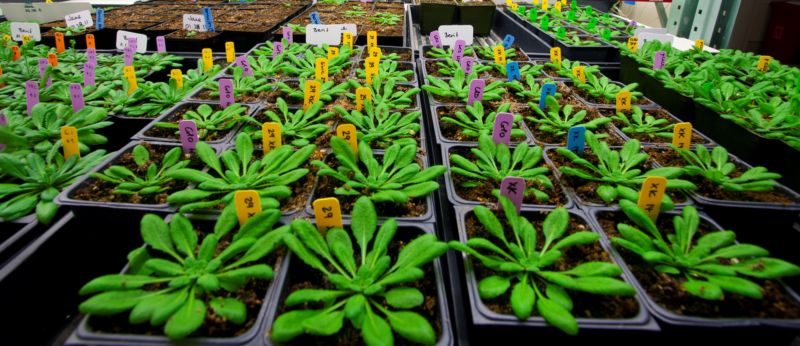We may now be able to engineer the most important lousy enzyme on the planet
Ars Technica » Scientific Method 2017-12-07

Enlarge / To genetically engineer RuBisCo, we'll no longer need all the time and space involved with these plants. (credit: Roy Kaltschmidt)
The single most abundant protein on the planet isn't actually very good at its job. And, unfortunately, its job is important: to pull carbon dioxide out of the atmosphere and incorporate it into sugars and other molecules that most of Earth's life depends on. Improving its function could help us in a variety of ways, from boosting crop productivity to cleaning up after our carbon emissions.
Unfortunately, the enzyme is also extremely fussy about how it operates, in part as a result of the evolutionary events that put it in plants in the first place. But now, a team of German scientists has figured out how to get the enzyme to work in the standard lab bacteria, E. coli, opening the door slightly to genetically engineering our way to more efficient plants. But the work also makes it clear that things aren't quite as simple as we'd like.
A key enzyme
The enzyme has the catchy name "ribulose-1,5-bisphosphate carboxylase/oxygenase," but everyone knows it as "RuBisCo." Its function in the cell is to take the carbon of carbon dioxide, obtained from the air, and link it to a five-carbon sugar. This makes a six carbon sugar, an essential part of the process of photosynthesis. But it also allows the carbon to be used in a variety of other chemical reactions inside a cell that would never work with carbon dioxide. These include creating the building blocks of DNA and proteins. Through these two functions, the enzyme is essential to most life on Earth.